
In 2014, Tegermark and Stewart Russell and Stephen Hawking published in the Huffington Post article "Beyond our complacency for super-smart machines". This led to media coverage of AI security. The future life behind tech marks. The institute is also famous. Where is the Future Life Institute born? Why Musk and Hawking have joined the Scientific Advisory Committee? This article will take you through the past and present of the Future Life Institute.
A conference that affects the future of humanity, and an organization
In the afternoon on the first Sunday of 2015, a group of people gathered quietly to attend a closed-door conference in a resort in Puerto Rico. The conference brought together Oxford Bosren, an artificial intelligence ethicist at Oxford University, Jan Tarion, founder of Skype, and Sean Legg, an AI expert from Google. The conference has a very optimistic theme: "The future of AI: Opportunities and Challenges coexist." What makes this conference even more mysterious is that all media reporters are forbidden to participate. At the same time, participants cannot publicly view the conference during their participation.
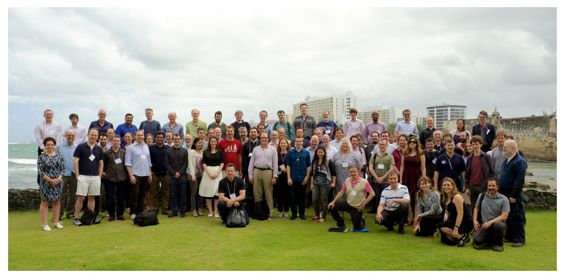
Photo of Puerto Rico Conference participants
At the end of the week-long meeting, when the meeting is about to end, everyone is ready to go to the bar and participate in the subsequent celebration. Professor Tegermark, the organizer of the conference, let everyone stay for a moment. "There is a big thing to announce." Then, a strong figure came to the stage, he was Elon Musk. Under the lights, the appearance of Musk caused a disturbance in the audience.
Musk cleared his throat and began to announce that he would donate 10 million U.S. dollars to the one-year-old organization founded by MIT, the Future of Life Institute (FLI).
The Birth of Future Life Institute
Musk arrived at the ceremony in the last few minutes. Two days later, SpaceX will launch an important rocket launch and try to recover some of the rockets on the sea platform. However, he insisted on arriving at the scene because he believed that the conference and the newly born organization had extraordinary significance to the world.
In many media reports, Elon Musk is often described as a firm threat of artificial intelligence. The cause is the well-known tweet he released in August 2014: "We need to be cautious about AI. They may be more dangerous than nuclear weapons."
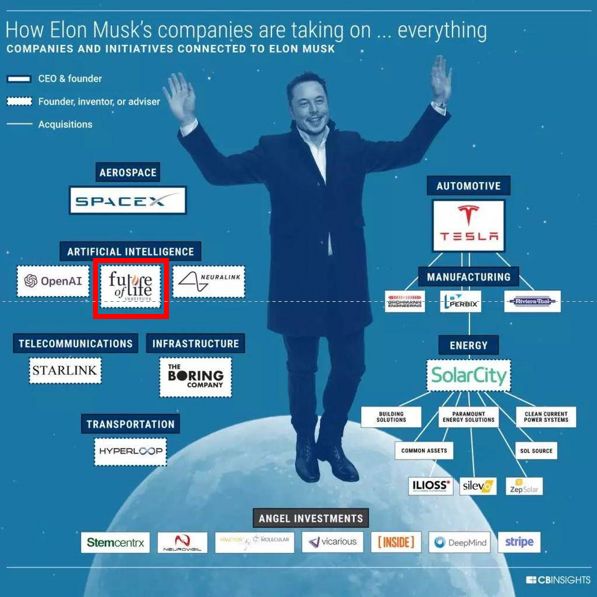
Future Life Institute is a non-profit organization.
Linking the academic community with the scientific and technological enterprises to promote the development of "AI beneficial sports"
At about the same time, a professor at MIT promoted his plan with this belief. Because of Thomas's tweety “terrorist†tweets, the stories of the two people have intersected. It was almost a snap and when they first telephoned, Musk agreed to join the Scientific Advisory Board of the Institute for Future Life, and expressed his willingness to fund the preparation of the Puerto Rico Conference mentioned by the Future Life Institute.
What kind of situation was this future life research institute born? What kind of research is being promoted after it was established?
Mad Max
Prior to the establishment of the Institute for Future Life, as a tenured physicist in MIT physics, Tiger has made remarkable achievements in the research of parallel universes. He was a teacher of John Wheeler, and he shared the same door with Richard Feynman and Kip Thorne. The mathematical universe’s hypothesis made him “the most original scientist in today’s worldâ€.
Over the years, Tigermark has extended his research to artificial intelligence. Many people will find it strange that a physicist should "open the gap" to run artificial intelligence?
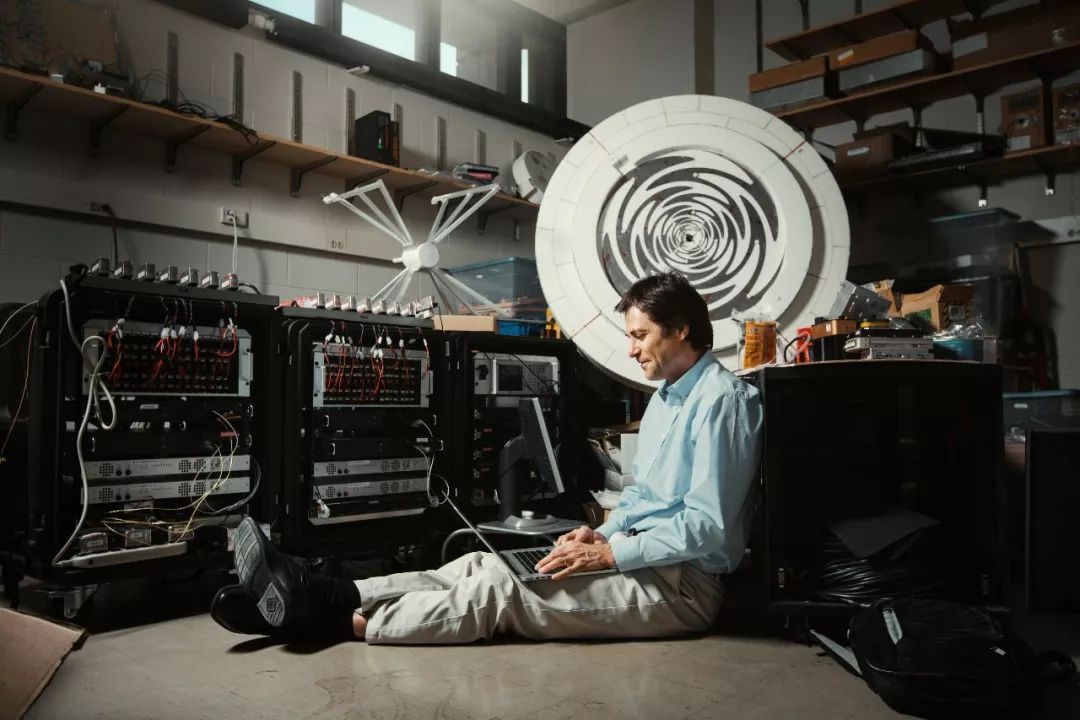
Tegermark
On the one hand, MIT has a deep accumulation in the field of artificial intelligence. Although artificial intelligence was first proposed at Dartmouth College, it was MIT that was initially implemented. On the other hand, much of the research on teegak is based on the latest computer technology. He himself has developed data analysis tools for the study of the cosmic microwave background. In the past few years, he has been working hard with MIT's team in the AI ​​research field. He has published five AI technical papers, one of which was published in cooperation with Yang Likun (one of the three giants of deep learning).
In private, he prefers the nickname “Mad Max.†He has the nickname of a dreamer under the cloak of a scientist. In his words, "Since I learned about the nuclear arms race at the age of fourteen, I have been worried that our technical power will grow faster than we have to control it." This concern has been accompanied by his academic career and has made him Keep moving. It was also this romanticism that brought him along with Elon Musk and Stephen Hawking. In his first book "Through the Parallel Universe" on a new book tour, he was determined to do something for this world. First, we must set up a non-profit organization that focuses on using technology management to improve the future of life.
Future Life Institute and its members
Next, Tegermark began to hook up his friends. In London, Teckmark found Dennis Hasabis, the founder of Deepmind. After two people talked about the technological breakthroughs and changes in the AI ​​field, Teegmak made a showdown with Hasabis, including his own ideas on AI security research and the plans of the Future Life Institute. Hassabi agreed with the idea of ​​Tiger, and will give support and help in research.
Another friend, Jan Tarian (Founder of Skype), was even more realistic. After he had promised him a vision of the Institute for Future Life, he decided to allocate him $100,000 a year. At a meeting in Puerto Rico a year later, Talyan half-jokingly said: This is the best investment I have ever made. It means to me that it means the whole world. Subsequently, a group of volunteers from colleges and universities joined the Institute for Future Life.
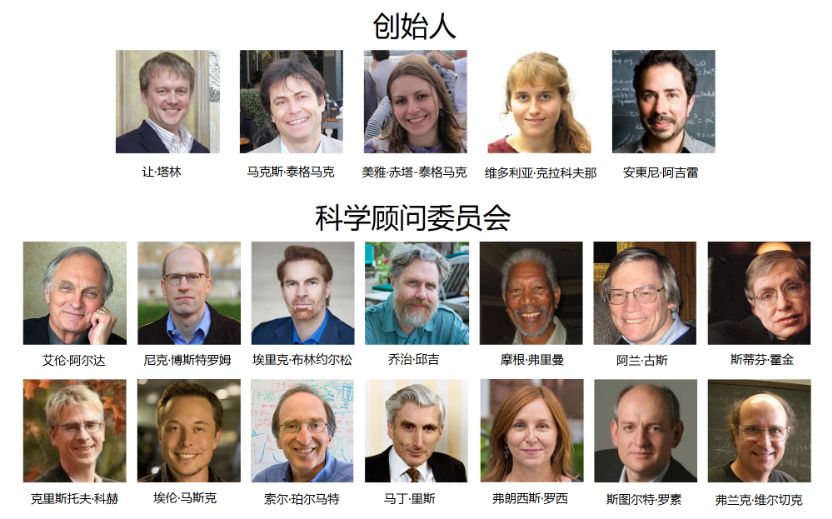
The committee covers AI field researchers, entrepreneurs, scientists and even philosophers.
On the one hand, the Future Life Research Institute will sponsor research teams all over the world to ensure the advancement of AI security research. On the other hand, it promotes the social consensus of AI security research through regular meetings and discussions with the world's top experts and entrepreneurs. The future Institute of Life’s scientific advisory board is luxurious, including cosmologist Stephen Hawking, SpaceX and Tesla Motors’ founder Elon Musk, and Oxford’s Future Human Research Institute’s Nick Bostrom. , Eric Brynjolson, Director of Digital Business at MIT, George Church, Professor of Genetics at Harvard University, Alan Gus, MIT Physics Professor, and Professor of Artificial Intelligence at Cambridge University, Berkeley, Calif. Are involved.
"AI beneficial exercise" - let AI security research into the mainstream
In 2014, the Future Life Research Institute fired its own shot. Tegermark and Stewart Russell, Stephen Hawking, published in the Huffington Post, "Beyond our complacency for super-smart machines." Expressed the author's potential risks and concerns about the rapid development of AI.

The "original" article that is often misinterpreted by other media:
This article sparked an upsurge of media coverage of AI security. Technology leaders such as Elon Musk and Bill Gates joined the discussion and expressed their opinions. Regrettably, a lot of media misdirected and published an alarmist article that “Steven Hawking warned that the rise of robots may cause catastrophic damage to human beings.â€
So what really made AI security research into the mainstream was the Puerto Rico Congress held in January 2015. That is, the scene that appeared at the beginning of the article. Almost all the participants in this conference have reached consensus on this issue.
The smartest minds of this era are brought together
One week after the conference ended, the Future Life Institute launched the AI ​​research grant application channel. About 300 teams from around the world apply. After screening, 37 teams started the first phase of the study.
In addition, a famous open letter also entered the public view. In an open letter entitled “A Study on Prioritized Research into a Powerful and Helpful Artificial Intelligenceâ€, it was emphasized that “studies should not be limited to the ability to expand AI, but also need to maximize the benefits of AI to society. †and set out the priorities for the next phase of research. This open letter quickly collected more than 8,000 signatures, including many world-renowned AI developers and Elon Musk and Stephen Hawking.
It was also at this time that the media had made subtle changes to the “AI Benefitive Campaign†report, and there was no Terminator photo again. AI security research is no longer empty talk, but there are many practical and useful tasks to be done. And, many excellent research teams have rolled up their sleeves to join in.
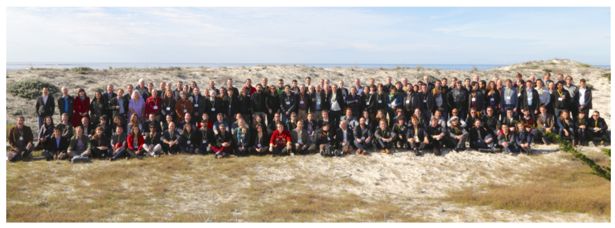
The group photo of Asilomar is also the "hero spectrum" of AI's beneficial sports. You can find entrepreneurs such as Larry Page and Eric Schmidt, and Wu Enda and Danmis Hasabis. Such technical experts, as well as top experts from psychology, economics, sociology, such as Daniel Kahneman. Representatives from DeepMind, Google, Facebook, Apple, IBM, Microsoft, and Baidu all attended the event.
Later, at the 2017 Asilomar Conference, "AI beneficial sports" was pushed to the first climax.
AI is booming with beneficial sports
The beneficial movement of AI is booming. In the corporate world, Amazon, DeepMind, Facebook, Google, IBM, and Microsoft have launched a "beneficial AI" industry partnership.
In the academic world, there are many research teams and institutions in the AI ​​security field who have received donations, including the Institute of Machine Intelligence at the University of California, Berkeley, the Human Future Institute at Oxford University, and the Cambridge University Center for Existential Risk Studies. There are also other "helpful AI" projects that are continuing to launch, including the Cambridge Brainless Future Center for Intelligence, the Gates Center for Ethics and Computing Technology at Pittsburgh, and the Artificial Intelligence and Management Foundation in Miami. AI safety research is shaped in this way.
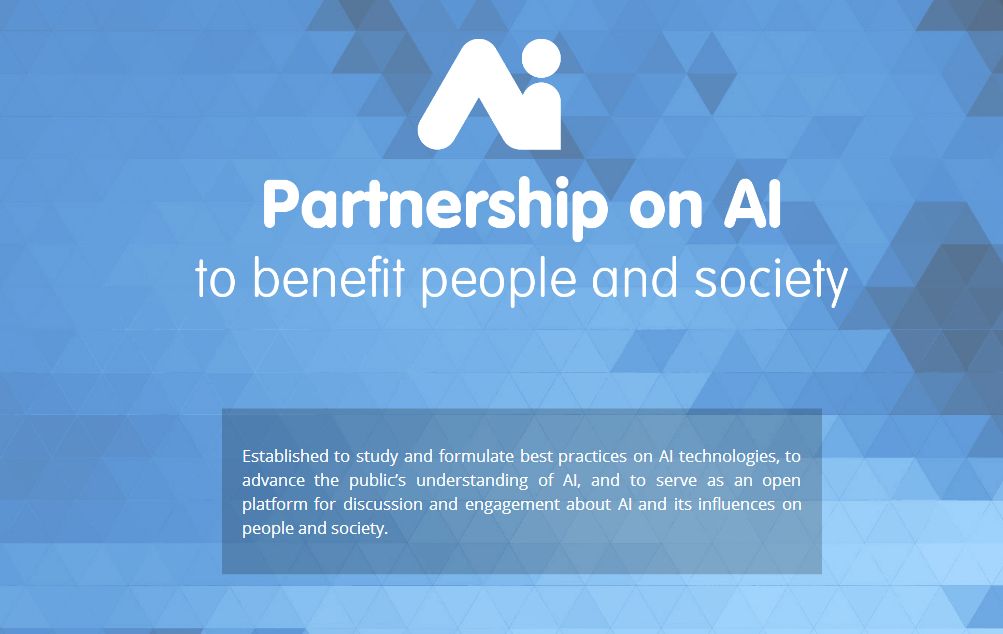
In the business world, AI's beneficial movement has also had a profound impact. Muske’s investment in the billion-dollar nonprofit research institute OpenAI is devoted to the study of universal AI in an open way to bring benefits to mankind.
At the government level, national governments and the IEEE (the world's largest technical expert organization) have published long reports and recommendations, in addition to dozens of reports and opinions.
Tegermark also wrote a book, which was recently published as Life 3.0: Being Human in an Age of Artificial Intelligence. Because he wrote highly esoteric concepts such as multiple universes, Tegermark was well-placed to have a basis but still imaginative viewpoint.
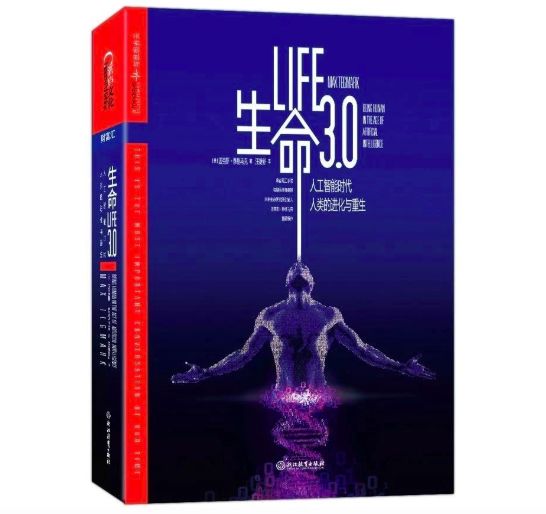
After the publication of "Life 3.0" in English, it quickly reached the top of the list of US Amazon technology books and was recommended by Elon Musk, Stephen Hawking and Ray Kurzweil. What is even more rare is that this book is also recommended by two authoritative academic journals, Science and Nature.
From the perspective of a panoramic perspective, the author firstly presented the discussion and controversy on this issue and discussed the influence of artificial intelligence on law, war, employment and society in the near future. However, Tiger's ambition is more than this, he turned his attention to the most far-reaching changes in this change: whether artificial intelligence can have consciousness? After 10,000 years, can we achieve symbiosis and prosperity with artificial intelligence? What is the ultimate physical limit law for the development of the universe's life? More importantly, how can we usher in prosperity in this reform, and at the same time we will not fall into a crisis and lose the meaning of being human?
The author communicates this view with the concept of Life 3.0: Artificial Intelligence will complete the final evolution of human beings. For us, what kind of thinking and actions should we take to cope?
This book will be a tool for thinking in the era of artificial intelligence. Welcome to join the most important dialogue in this era.
Future Bus connectors Description
Future Bus connectors, which use 2mm style have a mating distance of 10mm. Both Future bus and the upgrade Future bus+ are out-dated.No additional work has been done to upgrade the specification over the years. However we still produce products which meet the Physical and Electrical layers of IEE P896.
Antenk future bus connecto feature
designed in metric dirnension on 2 millimeters grid over 5 rows.
1 Standardized product through EIA (USA), IEC and CECC (international).
2 Selected by IEEE as the interconnection system for Futurebus + / SCI / VicBus.
3 Multi-sources product,use for telecommunication, network, server / workstation market.
4 High tempersture materials SMT compatible.
5 Modular design giving flexibility for system design.
6 Stackable end to end without loss of contact position.
7 High density (more than 2 times as compared to the standard inch based " Euroconnector DIN 41612" ).
8 Tuning Fork female contact concept for higher robustness and improved reliability
(low contact resistance and high normal force).
9 Low insertion force design.
10 Inverse connector system (signal and power).
11 Optimized solder and compliant press-fit terminations for backplane and circuit board connectors.
12 differents mating lengths on signal and 3 on power for standard connector system.
Future Bus connectors Application
Telecom backplane board
Antenk offers a complete line of 5+2 and 8+2 Hard Metric Connectors as well as a complete line of 4 and 5 row Future bus Connectors.

4 and 5 row Future bus Connectors
4 Rows Signal & Power
5 Rows Signal & Power
Female IDC Type 4&5 Rows
Power Connector & Cable
Shroud
Vertical, 5 Rows
Right Aangle, 5 Rows
Vertical, 4 Rows
Right Angle, 4 Rows
5+2 and 8+2 Hard Metric Connectors

2.0mm Future Bus Connector Male DIP
2.0mm Future Bus Connector Female DIP
2.0mm Future Bus Connector Male Press Fit
2.0mm Future Bus Connector Female Press Fit
2.0mm Future Bus Connector Power Type
2mm HM (hardmetric) Connector Introduction
System designed to meet the current and future needs of instrumentation applications giving excellent electrical and mechanical characteristics. It is a high performance, high density system with flexible configuration which offers upgradeability. The connector system is fully supported by Antenk spice models to guarantee choosing the right product to match the application.
ANTENK 2.0mm HARD METRIC CONNECTOR MODULES comply with international IEC 917and IEC 61076-4-101
standards. The connector systems in telecommunication and other industries require hight density connectors to support
larger amounts of data increasingly higher speeds antenk 2mm hardmetric modules offer the solution
Features and Benefits:
This high density connector modules can be stacked end to end without loss of space.
1,ANTENK developed the 2.0mm series under thorough consideration of impedance match, propagation delay,
cross talk, reflection. It is the ideal connector for digital high speed data application.
2,ANTENK offers differend types with inverted mating configuration. The male connector is a fixed module at the
backplane and the female commector is a free component of the plug-in module. The male connector has 5 signal row.
3 The outer shielding rows z and f of the male connector engage the shielding contacts of the famale connector. theshield
is also designed for gas tight, press-fit installation.
4 The connector system offers 15 contact length that utilize the proven press-fit assembly technique. Within the 15
contact length are 3 mating levels, achievable on both the plug-in and rear I / 0 side.
5 Coding system prevents mix-up and wrong mating between male and female connectors.
6 The 2.0mm hard metric connectors and DIN 41612 connectors can be used on the same PC board as both have the
same mating distance.
7 Staggered make-break pin populations for optional hot-swap capability.
8 Rear pin option for through-the-backplane I/O application.
9 High density PCI capability,shield for EMI/RFI protection.
2mm HM (hardmetric) Connector Features:
High density system with small real estate on backplane and daughtercard
Extensive range of signal, power, coaxial and fibre board-to-board and cable-to-board connections
Modular units give flexible configuration
Special versions for VME64 extensions and CompactPCI
Signal contact rating 1.5a fully energized
Universal power module rated at 7.8A/line, 23.4A fully energized
All lines impedance controlled to 50 (single ended) and 100Ω (differential) nominal
Safe design, complies with IEC950 in mated condition
Universal power module is safe in unmated condition
Several performance levels for board and cable connectors with unshielded and shielded versions
Mismatching keys block mating before any contact touch
Small press fit board hole allows maximum track width and minimum signal corruption
1.4 to 5.6mm (0.055 to 0.220 inch) Backplane thickness range
2mm HM (hardmetric) Connector Applications
Communications & Networking, Computers & Computer Peripherals, Sensing & Instrumentation
Metric Connectors,2.0Mm Hard Metric Connectors,Hard Metric Connectors,Hard Metric Female Connector,2.0mm Future Bus Connector Male DIP,2.0mm Future Bus Connector Female DIP
ShenZhen Antenk Electronics Co,Ltd , https://www.antenksocket.com
